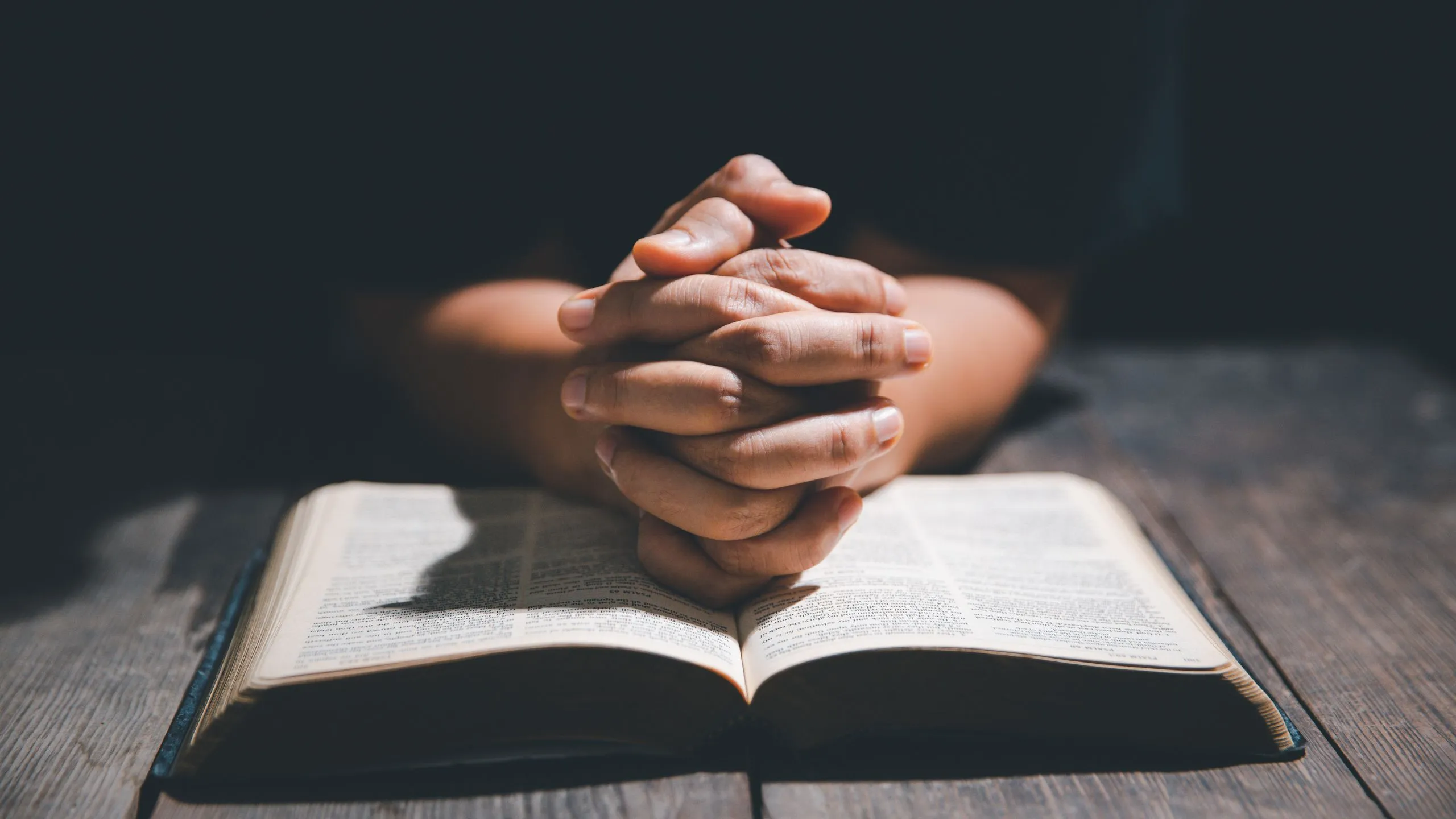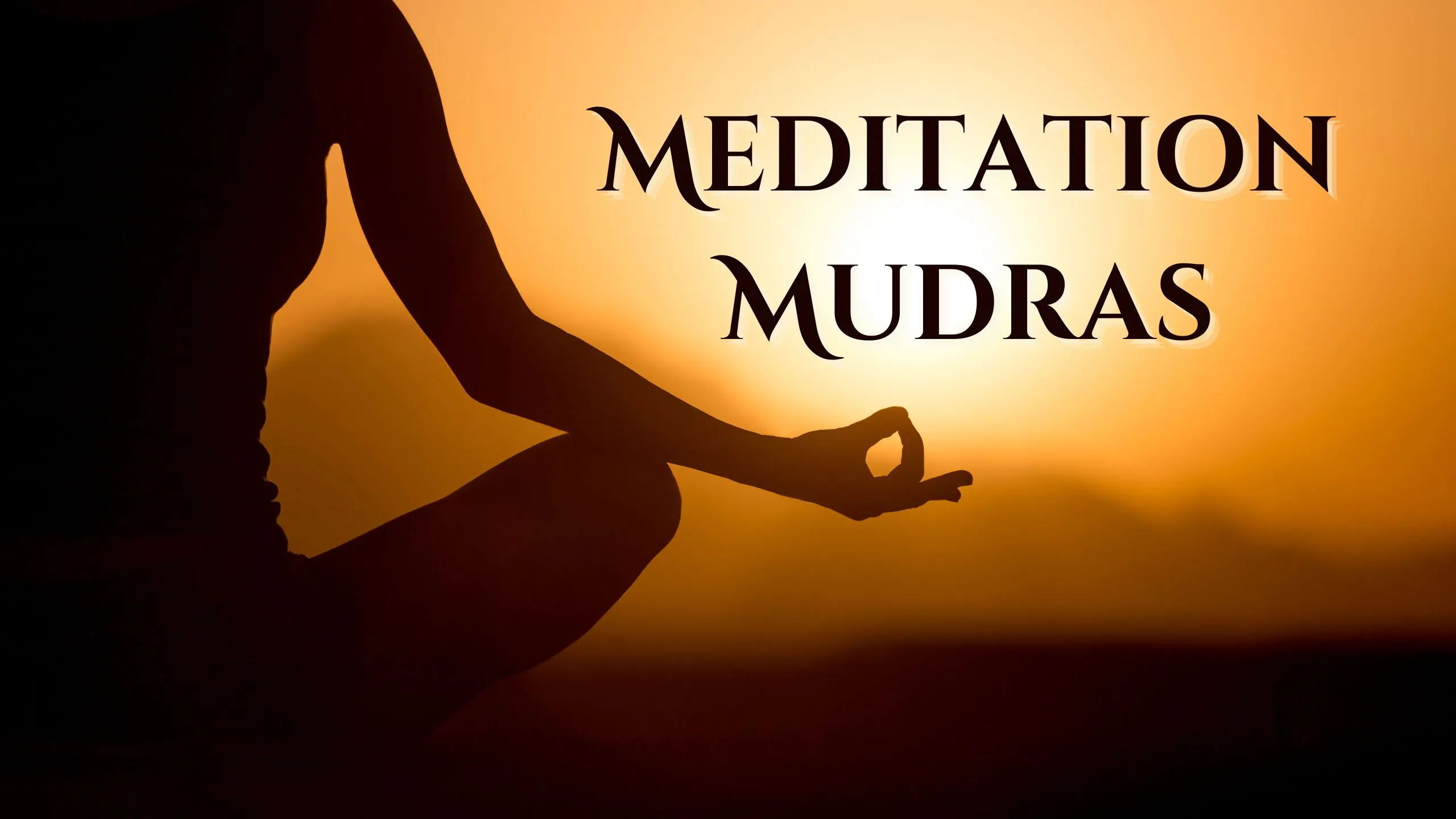“The body says what words cannot.” – Martha Graham
Introduction: Can Movement Heal the Mind?
Have you ever noticed how your hands automatically come together when you’re deep in thought or feeling peaceful? That’s no coincidence. Our bodies, especially our hands, have an ancient language of their own. Dance mudras and meditation together create a sacred practice rooted in history, energy, and emotion. In a world where stress, anxiety, and distraction dominate our daily lives, could the fusion of expressive movement and mindfulness offer a grounded escape?
Studies reveal that just 10 minutes of focused meditative practice a day can lower cortisol levels and enhance mental clarity. But when we infuse that meditation with dance mudras—the symbolic hand gestures used in classical dance and yogic traditions—we unlock even deeper layers of healing and awareness.
Let’s explore how dance mudras and meditation serve not only as artistic expression but also as powerful tools for inner transformation.
Read More: 6 Unexpected Roles of Meditation in Finding Inner Peace: A Path to Tranquility
What Are Dance Mudras?
Dance mudras are symbolic hand gestures used in classical Indian dance forms such as Bharatanatyam, Kathak, Odissi, and Manipuri. Each mudra represents a concept, emotion, or action, ranging from love and nature to divine energies and storytelling elements.
These gestures aren’t arbitrary. They are drawn from sacred texts like the Natya Shastra and serve both aesthetic and spiritual purposes. Mudras are said to stimulate energy flow, connect neural pathways, and serve as anchors for meditative states.
Read More: 8 Ancient Meditation Mudras That Erase Negativity & Elevate Focus
The Role of Mudras in Storytelling and Symbolism
| Mudra Name | Meaning | Used In | Emotional Symbolism |
|---|---|---|---|
| Anjali Mudra | Salutation, Gratitude | All classical dance forms | Peace, Reverence |
| Abhaya Mudra | Protection, Courage | Bharatanatyam, Odissi | Calm, Fearlessness |
| Chin Mudra | Consciousness, Knowledge | Yoga, Meditation | Clarity, Awareness |
| Kataka Mukha | Invitation, Offering | Kathak, Bharatanatyam | Welcoming, Grace |
| Pataka Mudra | Flag, Stop, Clouds | Most dance styles | Strength, Movement |
Read More: Significance of Meditation Symbols – 10 Powerful Symbols That Crush Negative Thoughts
The Spiritual Significance of Dance Mudras
Every time we use mudras in dance or meditation, we participate in an ancient system of symbolic communication. These sacred hand gestures are not merely decorative; they embody centuries of spiritual insight and cultural wisdom. In the combined practice of dance mudras and meditation, the gestures become conduits of energy, channeling awareness into the present moment.
Mudras stimulate the nadis (energy channels), helping us connect to universal consciousness and enhancing the meditative state. Through their symbolic shapes and precise positioning, they awaken dormant energies within the body and guide the flow of prana (life force).
In Ayurveda and yogic philosophy, our hands are seen as powerful energy tools. Each finger is associated with a specific natural element:
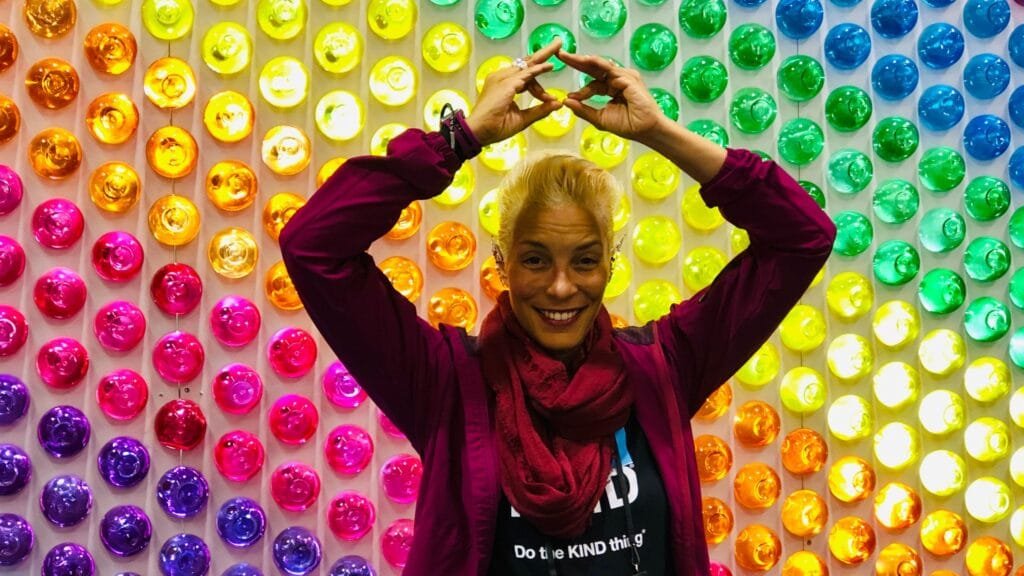
- Thumb: Fire (Agni)
- Index Finger: Air (Vayu)
- Middle Finger: Ether (Akasha)
- Ring Finger: Earth (Prithvi)
- Little Finger: Water (Jal)
When we bring our fingers into alignment using mudras during meditation, we balance these elemental forces within the body. This alignment is essential for harmonizing the chakras, grounding emotional energy, and cultivating inner peace. Whether you’re in stillness or expressive movement, using dance mudras and meditation in tandem deepens your spiritual awareness and transforms simple gestures into acts of mindful power.
Read More: How to Meditate on God’s Word: A 15-Minute Guide for Spiritual Growth
How Dance Mudras Enhance Meditation
Let’s get real—meditating isn’t always easy. Our minds wander, thoughts rush in, and stillness feels hard to achieve. That’s where the union of dance mudras and meditation offers a transformative approach that makes mindfulness more tangible and engaging.
By incorporating symbolic hand gestures into meditation, we:
- Anchor our focus. The tactile engagement of our fingers keeps the mind centered and grounded.
- Direct energy flow. Sacred gestures help channel prana (life force) through the body’s energy channels, activating specific chakras.
- Express emotion. Movement through mudras allows us to release stored emotional tension gracefully and intentionally.
- Enhance sensory awareness. Coordinated gestures improve our ability to tune into breath, body, and emotion simultaneously.
- Foster deeper states of mindfulness. The repetitive nature of mudras works as a physical mantra, helping to sustain meditative states.
“Meditation begins when movement finds stillness.”
When we synchronize the rhythm of classical hand gestures with breathwork, we elevate meditation from a passive act to a dynamic experience. The fusion of dance mudras and meditation empowers us to embody our practice, inviting stillness not by resisting movement, but by moving mindfully toward it.
Read More: Guided vs Unguided Meditation: Which Strategy Is Right for You?
5 Powerful Mudras Used in Meditation and Dance
1. Anjali Mudra (Prayer Pose)
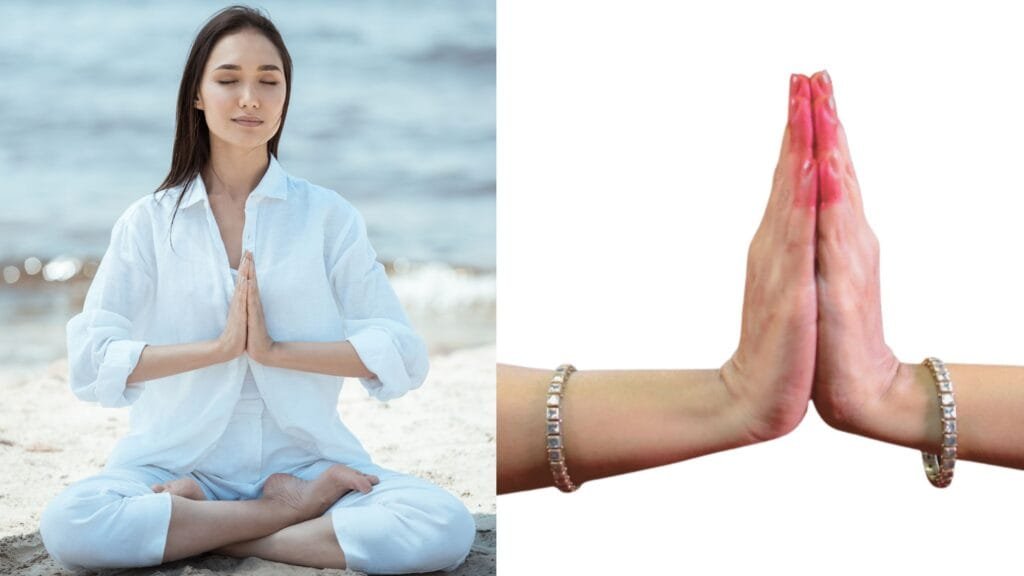
- How to Do It: Bring palms together at the heart center.
- Meaning: Respect, unity, offering
- Use in Meditation: Centers the mind and opens the heart chakra.
Read More: Yoga for Brain: Boost Memory & Focus Naturally in 30 Minutes Daily
2. Chin Mudra (Gesture of Consciousness)
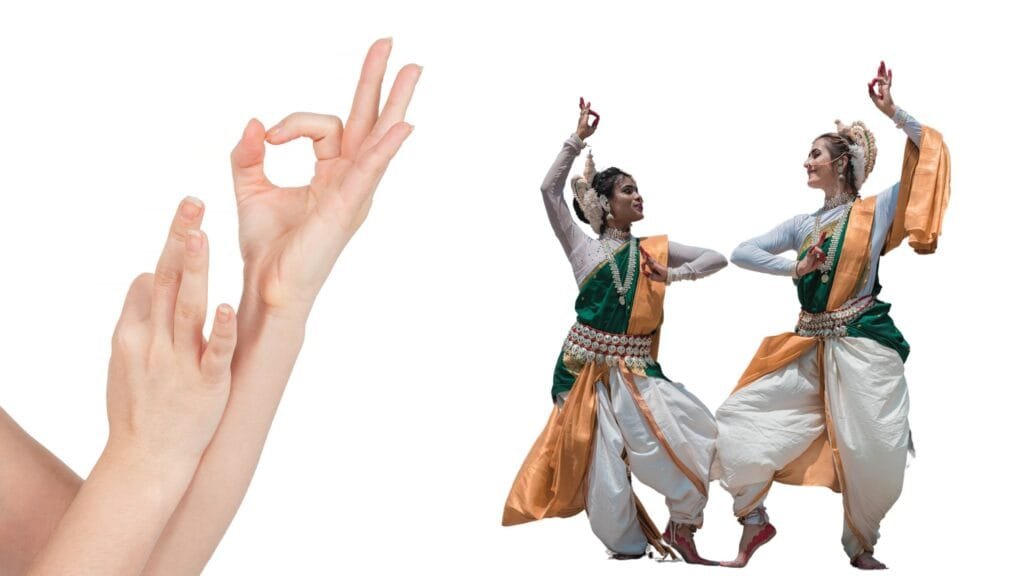
- How to Do It: Touch the index finger to the thumb; keep other fingers extended.
- Meaning: Knowledge, awareness
- Use in Meditation: Enhances concentration and intellectual clarity.
Read More: 10 Signs Your Subconscious Mind Is Trying to Tell You Something: Don’t Ignore
3. Abhaya Mudra (Gesture of Fearlessness)
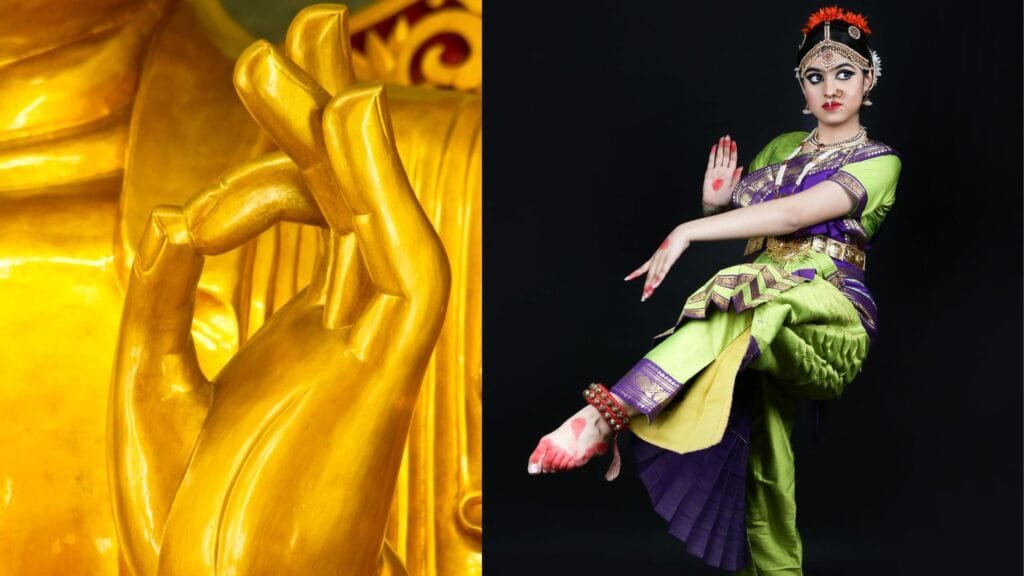
- How to Do It: Right hand raised, palm outward, fingers extended upward.
- Meaning: Protection, peace
- Use in Meditation: Promotes confidence and safety.
Read More: How to Build Confidence? 5 Key Secrets to Eliminate Insecurities
4. Padma Mudra (Lotus Gesture)
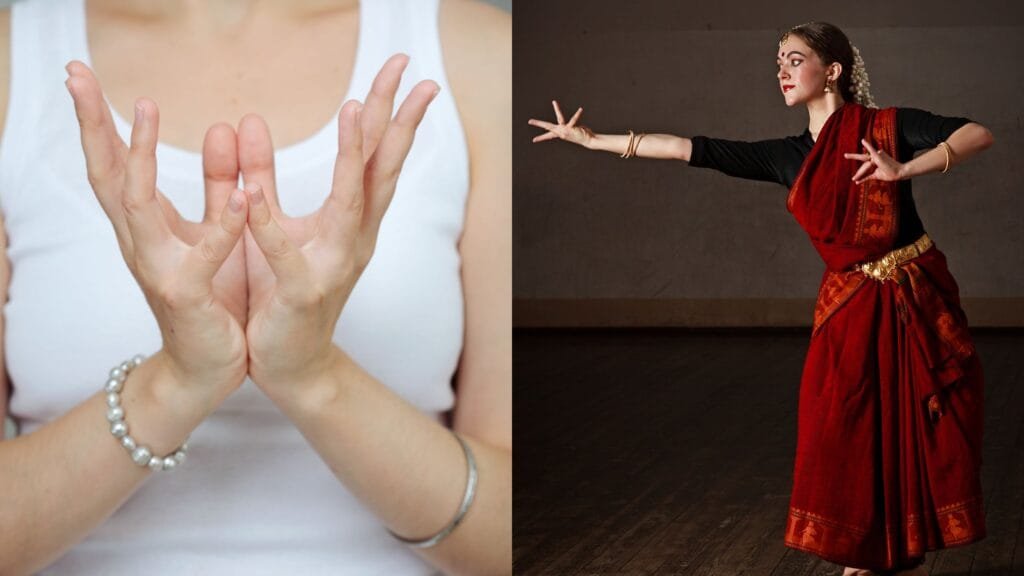
- How to Do It: Hands together at heart center, fingers spread like a blooming lotus.
- Meaning: Purity, awakening
- Use in Meditation: Connects to the crown chakra and spiritual insight.
Read More: 9 Vibrant Truths That Decode the Spiritual Significance of Colors
5. Dhyana Mudra (Meditation Pose)
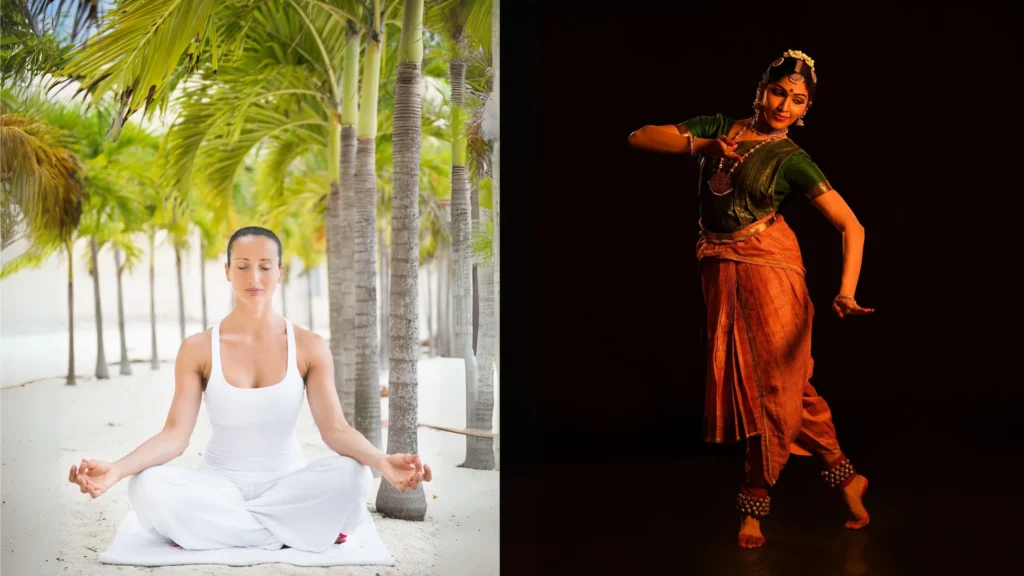
- How to Do It: Hands rest on the lap, right over left, thumbs lightly touching.
- Meaning: Inner reflection
- Use in Meditation: Encourages deep concentration and emotional release.
Read More: 7 Astonishing Techniques for Discovering Self-empowerment and Thriving
Integrating Dance Mudras into Your Meditation Routine
You don’t need to be a trained dancer to embrace this practice. All it takes is intention and stillness.
Here’s a Simple 10-Minute Routine:
Minute 1-2: Sit comfortably, close your eyes, focus on your breath.
Minute 3-5: Practice Chin Mudra with deep, slow inhales and exhales.
Minute 6-7: Transition to Anjali Mudra while silently repeating a mantra (e.g., So Hum).
Minute 8-9: Use Padma Mudra, visualizing a lotus blooming in your heart space.
Minute 10: End with Dhyana Mudra, observing sensations and breath.
Read More: 5 Quick and Effective Breathing Techniques to Reduce Stress Instantly
Modern Fusion: Dance and Spirituality in Today’s Practices
In recent years, yoga practitioners, therapists, and even dancers on social media have embraced dance and spirituality as one. Programs like chakra dance and ecstatic movement integrate sacred hand gestures with free-form dance.
We see this in:
- Dance therapy for trauma healing
- Yoga with mudras in flow classes
- TikTok creators explaining mudras for calm and grounding
Read More: Unveil the Spiritual Significance of Yoga Postures: Be an Expert in 30 Minutes Daily
Key Benefits of Practicing Dance Mudras in Meditation
- Enhances breath control
- Deepens focus and emotional balance
- Activates subtle body awareness
- Improves hand-eye-brain coordination
- Grounds wandering thoughts
- Encourages embodied mindfulness
Conclusion
Incorporating dance mudras and meditation into your daily practice is a transformative way to reconnect with your body, mind, and spirit. These sacred hand gestures, deeply rooted in spiritual and cultural traditions, are more than just movements—they are expressions of inner peace, healing, and awareness. Whether you’re a seasoned meditator or just starting your mindfulness journey, combining dance mudras with meditation can elevate your experience, reduce stress, and enhance your overall well-being. Embrace the power of symbolic movement and discover how just 10 minutes a day can bring clarity, balance, and harmony into your life.
FAQs
1. What are the benefits of using mudras in meditation?
Mudras help focus the mind, direct energy, and deepen your meditative experience by aligning breath and body.
2. Can beginners use dance mudras in meditation?
Yes, anyone can start with basic mudras like Anjali or Chin to anchor attention and breath.
3. How often should I practice mudras for meditation?
Just 10–15 minutes a day can make a difference. Consistency is key.
4. Do mudras influence our energy levels?
Yes. According to Ayurveda and Yoga, each finger represents an element, and mudras help balance these elements.
5. Can I combine mudras with music or chanting?
Absolutely. Mudras pair beautifully with mantras, meditative music, or even movement practices like yoga or slow dance.




